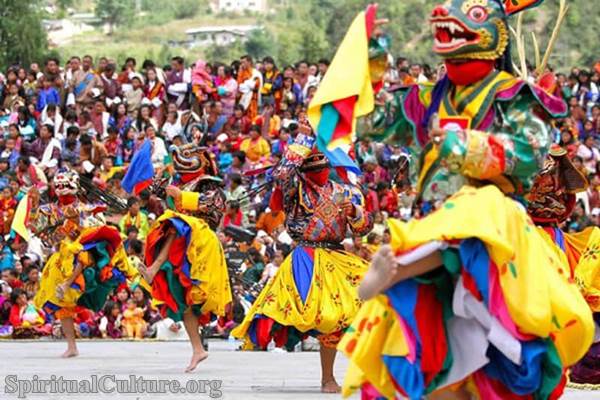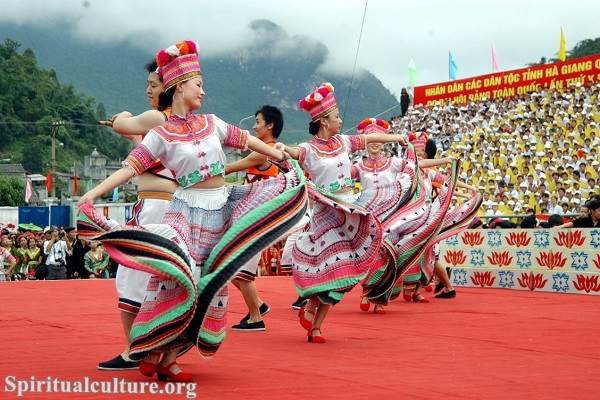In the realm of global culture, few traditions offer the depth, discipline, and aesthetic refinement of Japan’s traditional arts. At Spiritual Culture, we approach this ranking not merely as a list of hobbies, but as an exploration of Geidō (The Way of Art). As of the Current Time of Writing (November 2025), interest in these arts has surged globally, driven by a collective yearning for mindfulness, sustainability, and the Zen philosophy of finding universe-shaking profundity in the smallest details.
The concept of “Art” in Japan historically differs from the West; it is not just about the final masterpiece but the spiritual evolution of the practitioner. Whether it is the silence of the tea room or the explosive energy of the calligraphy brush, these arts are disciplines designed to polish the spirit. They are grounded in concepts like Wabi-Sabi (the beauty of imperfection), Ma (negative space), and Mushin (the state of no-mind).
This list ranks the Top 10 Traditional Japanese Arts based on a combination of global popularity, cultural ubiquity, and—most importantly—their depth of spiritual significance. We have verified the status of these arts, including their recognition by UNESCO and their continued practice in modern 2025 society, to ensure this guide serves as an authoritative cultural resource.
Table of the Top 10 Traditional Japanese Arts with the Greatest Spiritual Influence
| Rank | Art Form (Japanese Name) | Core Spiritual Concept | Heritage Status & Recognition |
|---|---|---|---|
| 1 | Sadō (The Way of Tea) | Ichigo Ichie (One time, one meeting) | Global Icon of Zen Culture |
| 2 | Bonsai (Miniature Landscaping) | Harmony of Man and Nature | Worldwide Horticultural Phenomenon |
| 3 | Ikebana (Flower Arranging) | Ma (Sacred Space) & Silence | 3,000+ Schools Worldwide |
| 4 | Budō (Martial Arts: Judo/Kendo) | Mushin (No-Mind) & Discipline | Olympics / UNESCO (Judo/Karate roots) |
| 5 | Kabuki (Classical Theater) | Stylized Beauty & Moral Conflict | UNESCO Intangible Cultural Heritage (2008) |
| 6 | Ukiyo-e (Woodblock Prints) | Mono no Aware (Transience of Life) | Defining Aesthetic of Edo Period |
| 7 | Shodō (Calligraphy) | Ki (Energy Flow) & Absolute Focus | Mandatory Japanese School Curriculum |
| 8 | Noh (Spiritual Theater) | Yūgen (Profound Grace) | UNESCO Intangible Cultural Heritage (2008) |
| 9 | Tōgei & Kintsugi (Ceramics) | Wabi-Sabi (Accepting Flaws) | High Growth Market (2024-2025) |
| 10 | Haiku (Poetry) | Mindfulness of the Moment | Global Literary Standard |
Top 10. Haiku (The Art of Brief Poetry)
Haiku is perhaps the most deceptive of all Japanese arts; its 5-7-5 syllable structure seems simple, yet it demands a profound contraction of the universe into three lines. Originating from the collaborative linked-verse tradition (Renga), Haiku evolved under masters like Matsuo Bashō into a solitary practice of capturing the “Here and Now.” In 2025, Haiku remains a global literary phenomenon, practiced in dozens of languages as a method of grounding oneself in the present moment.
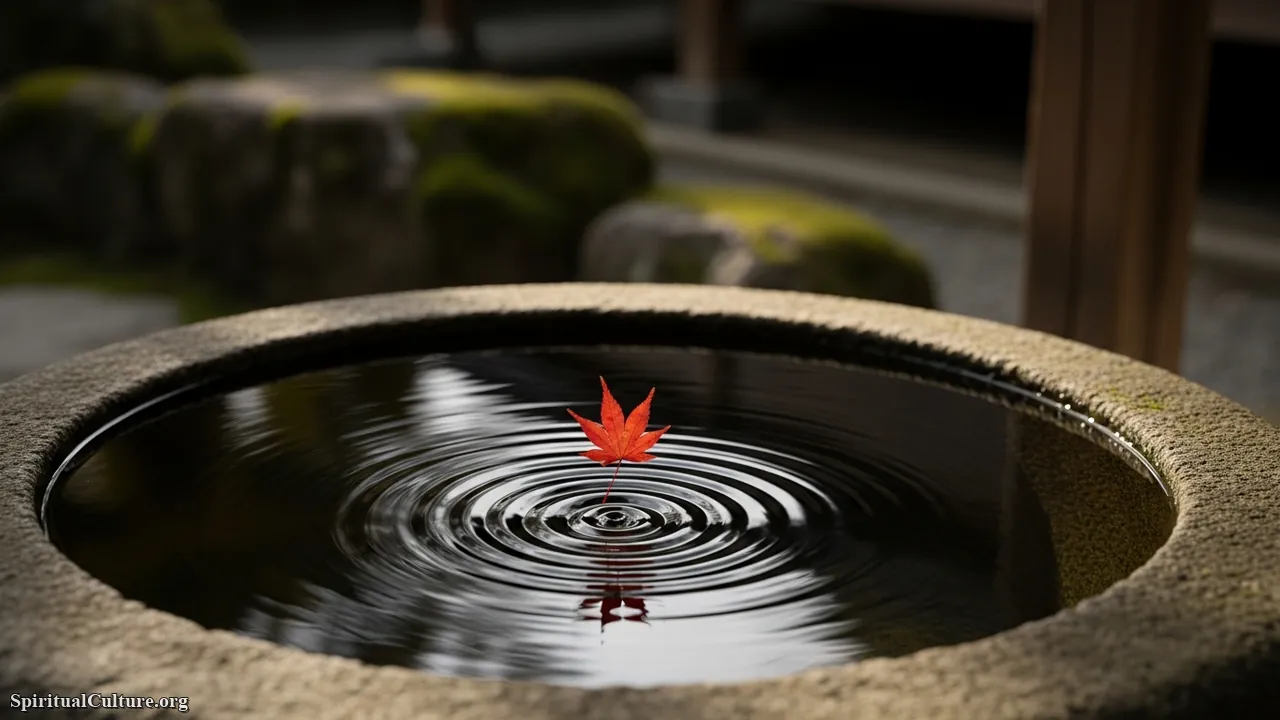
From a spiritual perspective, Haiku is an exercise in egolessness. The poet must step aside to let the nature of the object—a frog jumping into a pond, the silence of snow—speak for itself. It relies heavily on Mono no Aware, a bittersweet sensitivity to the ephemeral nature of things. A successful Haiku is not just a description; it is a moment of enlightenment (Satori) captured in text, forcing the reader to pause and visualize the scene with meditative clarity.
In our modern era of digital noise, Haiku serves a vital preservation role: it teaches the discipline of brevity and observation. It reminds us that spiritual insight does not require lengthy scriptures; it can be found in the sound of a cicada or the sudden autumn wind. It preserves the Japanese seasonal sensibility, connecting human emotion directly to the cycles of the earth.
Cultural & Spiritual Highlights:
- Zen Roots: Strongly influenced by Zen Buddhism’s focus on direct experience over intellectualizing.
- Kigo: Traditional Haiku must contain a “season word” (kigo), anchoring the spirit in nature’s cycle.
- Global Reach: Celebrated internationally, with major English-language associations dedicated to the form.
Top 9. Tōgei & Kintsugi (Ceramics and Golden Repair)
Japanese pottery, or Tōgei, is one of the oldest ceramic traditions in the world, but it is the philosophy behind it—specifically Kintsugi—that secures its place in this ranking. While the West often sought porcelain perfection, Japanese masters, influenced by the Tea Ceremony, began to prize the rough, the unglazed, and the accidental. Kintsugi, the art of repairing broken pottery with lacquer mixed with powdered gold, takes this further by treating breakage and repair as part of the history of an object, rather than something to disguise.

The spiritual impact of this art form is piercingly relevant today. It is the physical manifestation of Wabi-Sabi—finding beauty in the imperfect, impermanent, and incomplete. Spiritual Culture emphasizes that Kintsugi is a metaphor for the human soul; it teaches that our scars and “breaks” are not things to be hidden, but are what make us unique and valuable. The gold lacquer highlights the cracks, celebrating resilience over pristine perfection.
Preservation of these techniques is surging. Reports from 2024 indicate a rising global demand for authentic Japanese ceramics and Kintsugi workshops. This resurgence is not just commercial; it is a counter-cultural movement against the disposable nature of modern consumerism, encouraging a relationship of care and longevity with the objects we use daily.
Cultural & Spiritual Highlights:
- Six Ancient Kilns: Japan protects its “Six Ancient Kilns” (e.g., Bizen, Shigaraki) as Japan Heritage sites.
- Philosophy of Clay: Potters often speak of “listening to the clay” rather than forcing their will upon it.
- Resilience: Kintsugi transforms the concept of “waste” into “rebirth.”
Top 8. Noh (The Theater of Spirits)
While Kabuki is the theater of the people, Noh is the theater of the spirit. Designated a UNESCO Intangible Cultural Heritage asset in 2008, Noh is a masked musical drama that has remained virtually unchanged since the 14th century. The stage is a sparse square of cypress wood, the movements are sliding and ghost-like, and the actors wear masks that change expression with the tilting of the head. It is often described not as a performance, but as a ritual invocation.
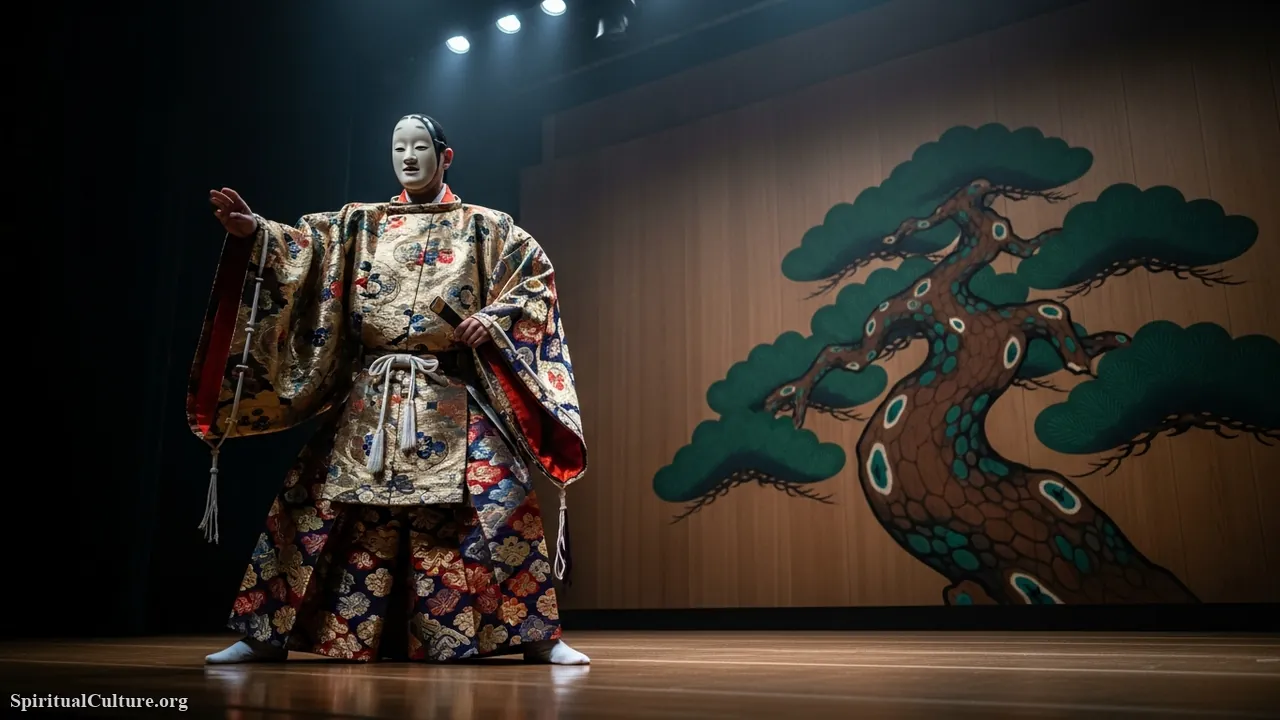
Noh is deeply steeped in Shinto and Buddhist spirituality. Many plays revolve around the supernatural—ghosts, demons, or spirits of nature—seeking release from earthly attachment. The aesthetic is governed by Yūgen, a concept of profound, mysterious beauty that cannot be fully described, only felt. For the audience, Noh requires active spiritual participation; the minimalism of the set forces the imagination to construct the reality, creating a shared meditative space between actor and viewer.
The preservation value of Noh lies in its resistance to modernization. It refuses to speed up for contemporary attention spans. It stands as a guardian of ancient Japanese dialects and archaic musical forms. Watching Noh is a lesson in patience and the ability to perceive the subtle movements of the soul beneath the mask.
Cultural & Spiritual Highlights:
- Oldest Theater: One of the oldest extant theater forms in the world performed continuously.
- The Mask: The Omote (mask) is treated as a sacred object; actors bow to it before putting it on.
- The Pine Tree: The only backdrop is usually a painted pine tree, symbolizing the eternal presence of the divine.
Top 7. Shodō (The Way of Calligraphy)
Shodō is far more than handwriting; it is the seismograph of the soul. In the East Asian tradition, the brush is considered an extension of the body and mind. Once the brush touches the paper, the stroke cannot be corrected or erased. This finality demands a state of absolute focus and spiritual clarity. In Japan, calligraphy is a mandatory part of education, ensuring that even in a digital age, the physical connection to language remains unbroken.
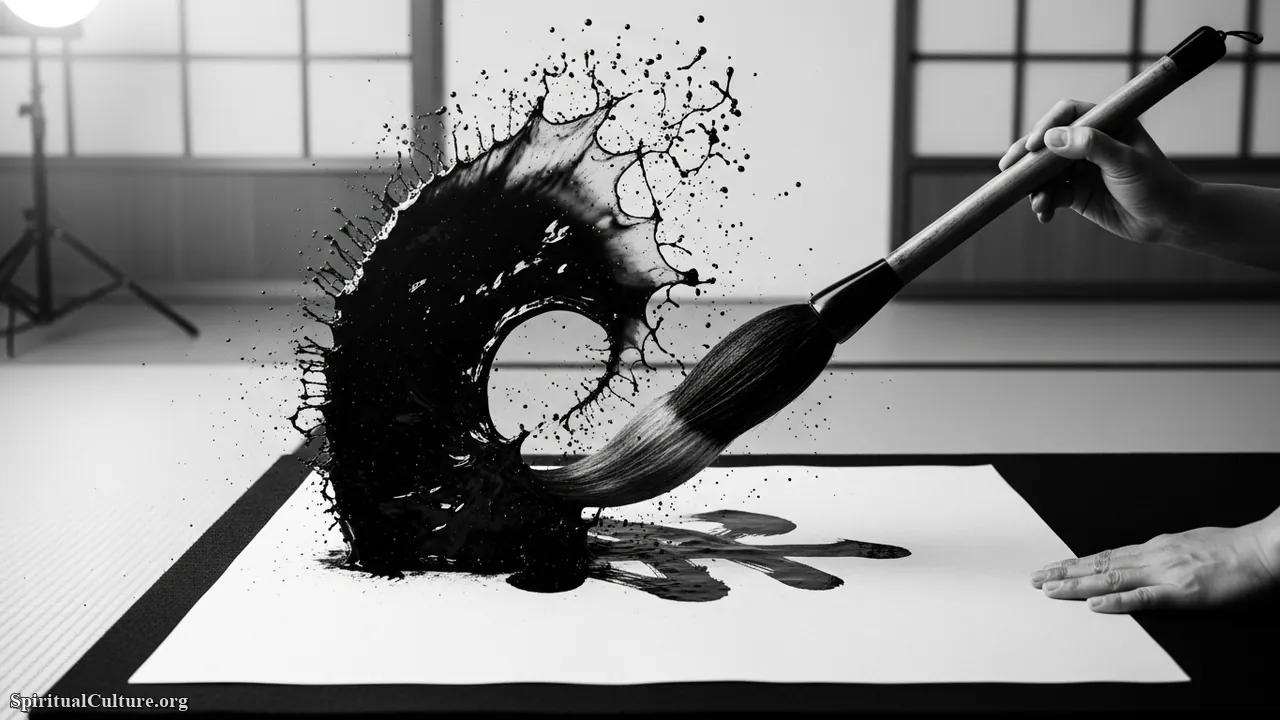
The spiritual essence of Shodō is linked to Ki (life energy). A master calligrapher does not write with their hand, but with their whole body and breath. The balance of the character, the variation in ink thickness, and the speed of the stroke reveal the inner state of the writer. Zen monks practice Hitsuzendō (Zen Calligraphy) to express their enlightened state, often drawing the Ensō (circle) which symbolizes the universe, the void, and enlightenment.
We see Shodō as a vital “moving meditation.” It teaches the moral lesson that actions have consequences—just as ink cannot be lifted from rice paper, our actions in life cannot be undone. One must move forward with confidence and intention. The practice preserves the sanctity of the written word in an era where communication is increasingly ephemeral and disposable.
Cultural & Spiritual Highlights:
- Mushin: The best calligraphy is said to be produced in a state of “no-mind,” free from conscious effort.
- Tools: The “Four Treasures of the Study” are the brush, ink, paper, and inkstone.
- Ensō: The Zen circle is the most famous subject of spiritual calligraphy, representing the cycle of life.
Top 6. Ukiyo-e (Pictures of the Floating World)
Ukiyo-e, the genre of woodblock prints and paintings that flourished from the 17th to 19th centuries, gave the world its most iconic images of Japan, such as Hokusai’s “The Great Wave.” Historically, these were mass-produced images of city life, landscapes, and entertainment districts. However, the term “Ukiyo” (Floating World) has a dual meaning: originally a Buddhist term for the sorrowful, transient world, it was re-appropriated to mean the fleeting pleasures of life.

The spiritual resonance of Ukiyo-e lies in its obsession with the moment. Whether depicting a courtesan, a kabuki actor, or a sudden rainstorm, these prints capture a specific split-second of reality that will never happen again. They teach the viewer to appreciate the vibrancy of life precisely because it is temporary. The influence of Ukiyo-e on the French Impressionists (Japonisme) confirms its power to shift how humanity sees light, nature, and perspective.
Today, the preservation of Ukiyo-e involves the complex craft of wood carving and hand-printing, a skill held by very few living masters. These prints remind us that art is democratic—Ukiyo-e was originally sold for the price of a bowl of noodles—and that beauty can be found in the everyday hustle of urban life.
Cultural & Spiritual Highlights:
- Collaboration: It requires a triad of masters: the artist (design), the carver (woodblock), and the printer (ink application).
- The Great Wave: Hokusai’s masterpiece is a spiritual symbol of nature’s overwhelming power and man’s fragility.
- Influence: Van Gogh and Monet were avid collectors, heavily influencing Western modern art.
Top 5. Kabuki (The Theater of Stylized Beauty)
Ranking in the top 5 for its sheer visual power and popularity, Kabuki is the flamboyant counterpart to the quiet Noh. Recognized by UNESCO as Intangible Cultural Heritage, Kabuki originated in the 17th century and is characterized by elaborate make-up (Kumadori), spectacular costumes, and exaggerated movements (Mie). It is a theater of spectacle that has successfully preserved the language, fashion, and moral codes of the Edo period.

While often seen as entertainment, Kabuki carries deep spiritual and Confucian themes. The plays frequently deal with the conflict between Giri (duty/obligation) and Ninjo (human emotion). The characters—whether heroic samurai or tragic lovers—are archetypes of the human struggle to do what is right. The theater itself is a ritual space where the audience shouts the names of actors (Kakegoe), creating a communal energy that transcends the barrier between stage and seat.
Kabuki’s preservation is unique because it is largely hereditary; acting names and skills are passed down from father to son (or adopted heir) for generations. This lineage system ensures that the “spirit” of the art form remains unbroken. It teaches us the value of legacy and the responsibility of carrying forward the torch of tradition while adapting it to the modern era.
Cultural & Spiritual Highlights:
- Onnagata: Male actors who specialize in female roles, cultivating an idealized, stylized femininity.
- Kumadori: The makeup colors have spiritual meaning—red for heroes (virtue/passion), blue for villains (jealousy/evil).
- UNESCO Status: Inscribed in 2008 on the Representative List of the Intangible Cultural Heritage of Humanity.
Top 4. Budō (The Way of the Warrior: Kendo/Judo)
Budō refers to modern Japanese martial arts (Judo, Kendo, Aikido, Karatedo) that evolved from the combat techniques of the Samurai (Bujutsu). However, the critical shift—and the reason they rank so highly—is the suffix “Dō” (The Way). These are not merely systems of fighting; they are systems of spiritual self-perfection. With millions of practitioners worldwide, Budō is arguably Japan’s most physically active spiritual export.
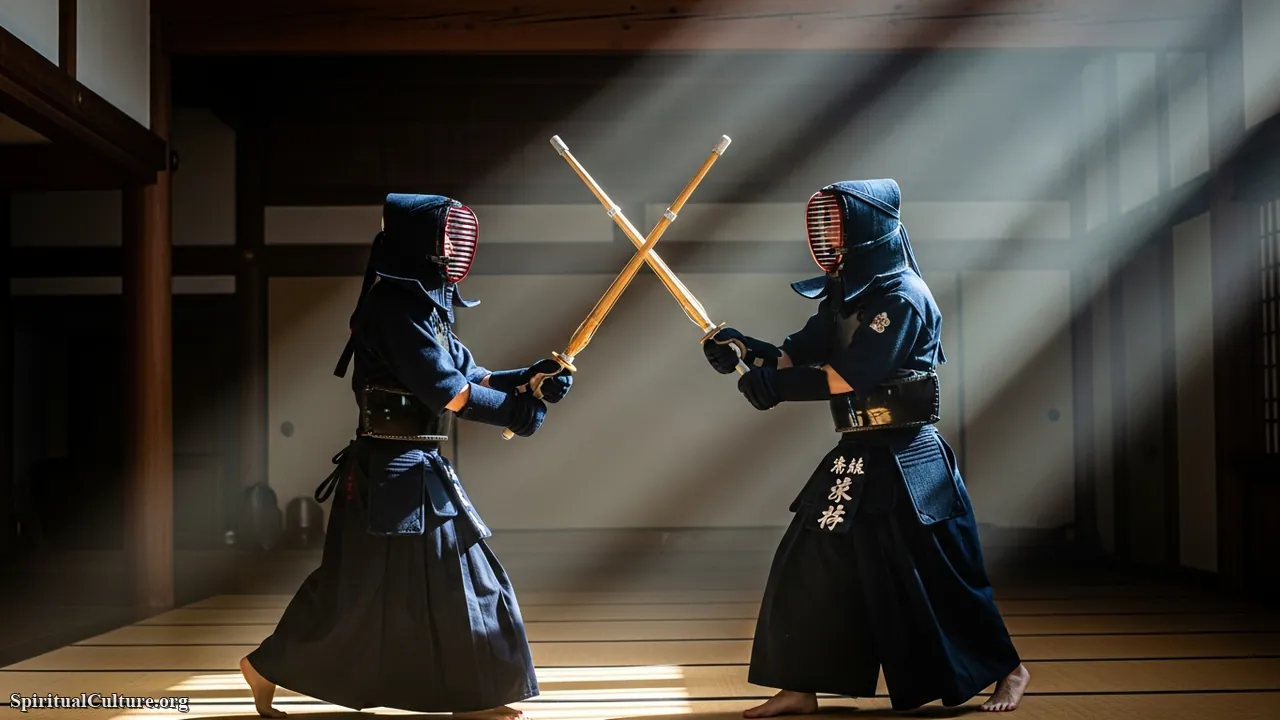
The spiritual core of Budō is the cultivation of Mushin (no-mind) and Zanshin (remaining mind/awareness). In Kendo, for example, a strike is not valid unless it is accompanied by “Ki-Ken-Tai-Ichi” (Spirit, Sword, and Body as one). The goal is not to destroy the opponent, but to conquer one’s own fear, ego, and laziness. It is Zen in motion. The Dojo (training hall) is treated as a sacred space, entered with a bow and maintained with ritual cleaning.
In a modern context, Budō provides a necessary antidote to sedentary, digital lifestyles. It preserves the Samurai code of Bushido—rectitude, courage, benevolence, respect, honesty, honor, and loyalty—values that Spiritual Culture identifies as essential for a balanced society. It teaches that true strength is gentle and that violence is the last resort of the weak.
Cultural & Spiritual Highlights:
- Rei (Respect): “Budo begins with a bow and ends with a bow.” Respect is the foundation.
- Jita-Kyoei: The Judo principle of “Mutual welfare and benefit”—improving oneself to help the community.
- Global Status: Judo is an Olympic sport; Kendo remains a rigorous cultural discipline.
Top 3. Ikebana (The Way of Flowers)
Ikebana, also known as Kado, is the Japanese art of flower arrangement. Unlike Western floral art which often emphasizes abundance and color, Ikebana emphasizes structure, minimalism, and line. With over 3,000 schools worldwide (such as Ikenobo, Ohara, and Sogetsu), it is a massive cultural force. It dates back to the 6th century as floral offerings to the Buddha, and this religious origin permeates the practice to this day.

The spiritual genius of Ikebana is its focus on Ma—the negative space between the branches. The empty space is as important as the flower itself, representing the void from which all life springs. The arrangement typically follows a scalene triangle structure symbolizing Heaven, Earth, and Man (Ten-Chi-Jin). Practicing Ikebana is a silent meditation; one must converse with the life of the plant, cutting away the non-essential to reveal its true inner beauty.
Ikebana teaches us the value of silence and the beauty of nature’s distinct lines. In a cluttered world, Ikebana provides a blueprint for simplicity. It reminds us that life is transient—the arrangement will fade—but that fleeting moment of harmony between man and nature is eternal. It is a profound spiritual practice of “giving life to flowers” (the literal meaning of Ikebana).
Cultural & Spiritual Highlights:
- Origins: Started by Ono no Imoko in the 6th century at the Rokkakudo temple in Kyoto.
- Philosophy: It is subtractive art; beauty is found in what is removed, not just what is added.
- Silence: Traditionally practiced in silence to maintain a connection with the spirit of the plants.
Top 2. Bonsai (The Universe in a Pot)
Bonsai is the art of growing miniature trees in containers, mimicking the shape and scale of full-size trees in nature. While it originated in China (Penjing), Japan refined it into a deeply spiritual discipline that has captivated the world. It is currently one of the most popular Japanese arts globally, with enthusiasts in every continent dedicating decades to single trees. Some famous Bonsai are hundreds of years old, passed down through generations.
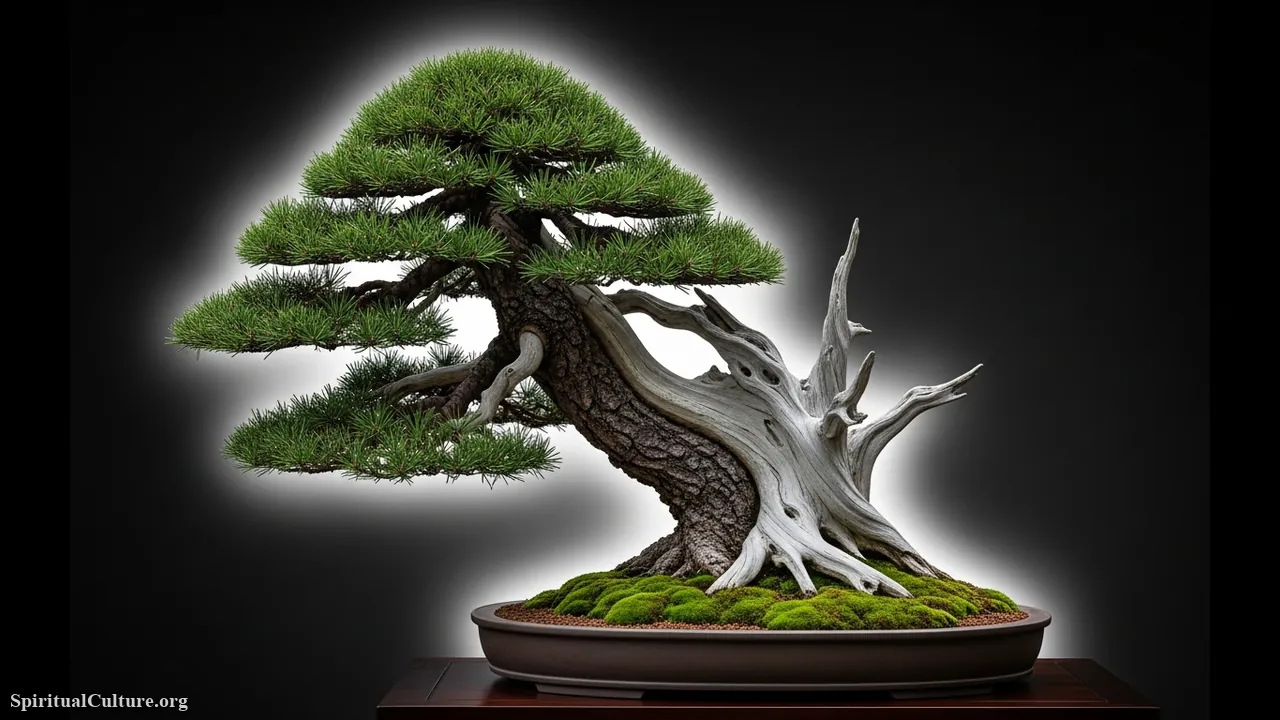
Bonsai is the ultimate exercise in patience and the long view of time. It embodies the Zen aesthetic of Wabi-Sabi and the Shinto reverence for nature. A Bonsai master does not “conquer” the tree; they collaborate with it. The tree represents the universe, and the pot represents the earth. The gnarled bark and deadwood (Shari) on a Bonsai symbolize the struggle of life against the elements, capturing the dignity of survival.
The moral lesson of Bonsai is stewardship. One cannot rush a Bonsai; it grows on its own timeline, often outliving its human caretaker. It forces the practitioner to slow down and accept the pace of nature. In our instant-gratification society, Bonsai stands as a living testament to the rewards of dedication, care, and the quiet observation of slow growth.
Cultural & Spiritual Highlights:
- Omiya Bonsai Village: A neighborhood in Saitama dedicated entirely to Bonsai nurseries, a pilgrimage site.
- Age vs. Dignity: The value is not just in the age, but in the Mochikomi (the character developed over time in the pot).
- Living Art: It is the only art form that is never “finished” as long as the subject is alive.
Top 1. Sadō (The Way of Tea)
Ranking at number one is Sadō (or Chadō), the Japanese Tea Ceremony. It is the pinnacle of Japanese spiritual culture because it synthesizes elements of almost all other arts—architecture, gardening, ceramics, calligraphy, flower arranging, and etiquette—into a single, cohesive ritual. Established by Sen no Rikyū in the 16th century, the Tea Ceremony is not merely about drinking tea; it is a ritual of peace, purity, and enlightenment.
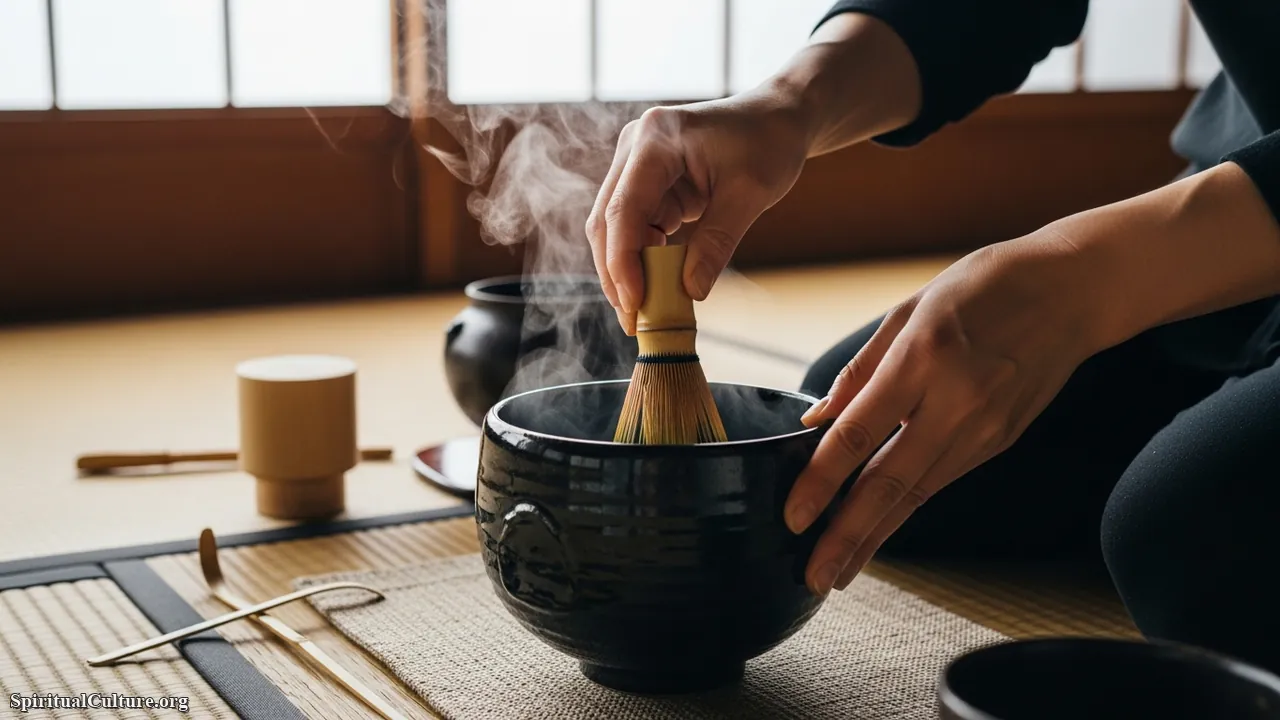
The spiritual heart of Sadō is captured in the phrase Ichigo Ichie (“One time, one meeting”). It signifies that this specific gathering, with these specific people, in this specific season, will never happen again in the exact same way. Therefore, the host and guest must treat the moment with the utmost reverence and sincerity. The four principles of Tea are Wa, Kei, Sei, Jaku (Harmony, Respect, Purity, and Tranquility). It is a radical act of mindfulness where every movement—from the folding of the cloth to the whisking of the matcha—is performed with total attention.
Sadō is the ultimate heritage asset because it encodes the DNA of Japanese hospitality (Omotenashi) and Zen philosophy. It teaches us that the ordinary acts of life—boiling water, making tea, serving a guest—can be sacred if performed with a pure heart. It is the antidote to chaos, offering a sanctuary of quietude where the boundaries between self and other dissolve over a bowl of green tea.
Cultural & Spiritual Highlights:
- The Tearoom (Chashitsu): Designed with a small “crawling-in” entrance (Nijiriguchi) to force all guests, samurai or peasant, to bow and enter as equals.
- Rikyū’s Legacy: Sen no Rikyū shifted the aesthetic from expensive Chinese wares to simple, rustic Japanese wares (Wabi-cha).
- Meditation: It is essentially a meditation in motion; the focus required leaves no room for worldly worries.
Conclusion: The Art of Living
At Spiritual Culture, we believe that these Top 10 Japanese Arts are not just cultural artifacts; they are pathways (“Dō”) to a deeper existence. They share a common thread: the elevation of the mundane into the sacred. Whether it is the single flower in a vase (Ikebana), the focused strike of a sword (Kendo), or the whisking of tea (Sadō), these arts teach us that spirituality is not found in escaping the world, but in engaging with it fully, mindfully, and creatively.
In a world that rushes toward the new, these ancient traditions offer a grounding force. They remind us that true mastery takes time, that imperfection is beautiful, and that the greatest art of all is the art of living a life of presence, respect, and harmony.

